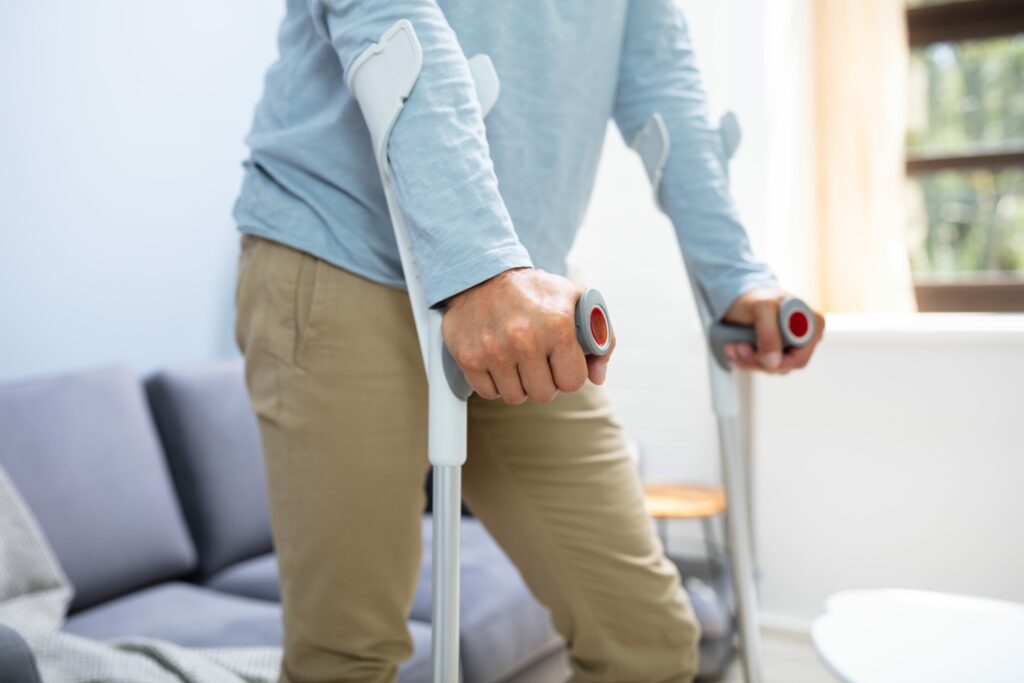Our client, Miss P, who was in her thirties, was admitted to A&E at the Conquest Hospital in Hastings having fallen. An x-ray revealed a fractured neck of femur and, the following day, she attended theatre for cannulated screw internal fixation. She was discharged home two days later.
Over the next 10 days she complained of increasing pain and was re-admitted to the Conquest where a diagnosis of deep infection was quickly established and an ultra sound guided aspiration was performed five days later. 415ml of watery pus were aspirated.
She was subsequently placed on intravenous antibiotics and discharged home two weeks later.
However, three weeks later she was re-admitted to the Conquest when it was identified that the metalwork was failing due to infection. She was taken to theatre for removal of the screws, debridement and irrigation and insertion of a spacer. It was noted that the original fixation had failed secondary to stephaureus infection. She was discharged about two weeks later and re-admitted two months later for the second stage right total hip replacement.
Thereafter she remained in significant pain, with limited mobility, and experienced an aggravation in her pre-existing depression.
We were instructed and acted pursuant to a conditional fee agreement (no win, no fee).
We obtained expert evidence from an orthopaedic surgeon and psychiatrist.
Our surgeon’s evidence was that Miss P’s treatment fell below an acceptable standard, and was negligent in the following respects:
- Deep infection following internal fixation of a hip fracture was a rare, but nevertheless well recognised complication. When she was re-admitted two weeks after the surgery the diagnosis of deep infection was quickly established by history, examination and confirmed by ultrasound and CT examination. It was reasonable to investigate her but, within three days when the CT scan showed a deep collection and she had raised inflammatory markers in her blood, it should have been obvious that there was a deep infection within the hip joint. The decision to treat the claimant simply with aspiration and antibiotics was unacceptable.
- Instead, within about four days of the admission, she should have returned to the operating theatre for a thorough open debridement and irrigation. The hip wound should have been opened and all the infected material and pus removed. The failure to perform a debridement antibiotics implant retention (DAIR) procedure was unacceptable.
- If a DAIR procedure had been performed, on the balance of probabilities, the infection would have been controlled and the subsequent collapse of the fracture would have been avoided. The removal of the infection would have maintained the position of the fracture and, on the balance of probabilities, the fracture would have united. The two stage hip replacement would have been avoided.
We arranged for Miss P to be examined by our orthopaedic surgeon who found, notwithstanding the negligence, radiologically she had a well fixed, well positioned right total hip replacement with no adverse radiological features and considered it was therefore difficult to fully explain the level of the physical disability reported. He would have expected some mild ongoing ache and discomfort in the hip replacement, but the poor level of her mobility could not adequately be explained from a purely orthopaedic standpoint.
Our expert psychiatrist considered that the development of the infection had a significant impact upon the claimant’s mental health which could in turn explain her heightened perception of her pain.
Be that as it may, upon being reassured by our orthopaedic surgeon, something which her treating surgeons had not done, Miss P grew in confidence and attempted to return to work. The trust’s chief executive formally apologised for the admitted negligence, which was an important step in Miss P’s rehabilitation.
The defendant admitted that there was a negligent failure to return the claimant to theatre, but denied that a DAIR procedure was appropriate. Be that as it may, it made a sizeable offer of settlement. Our expert evidence remained strong. It was pertinent that our expert reported more frequently for defendants than claimants. We made the further observations and negotiated the settlement equivalent to £59,142.












